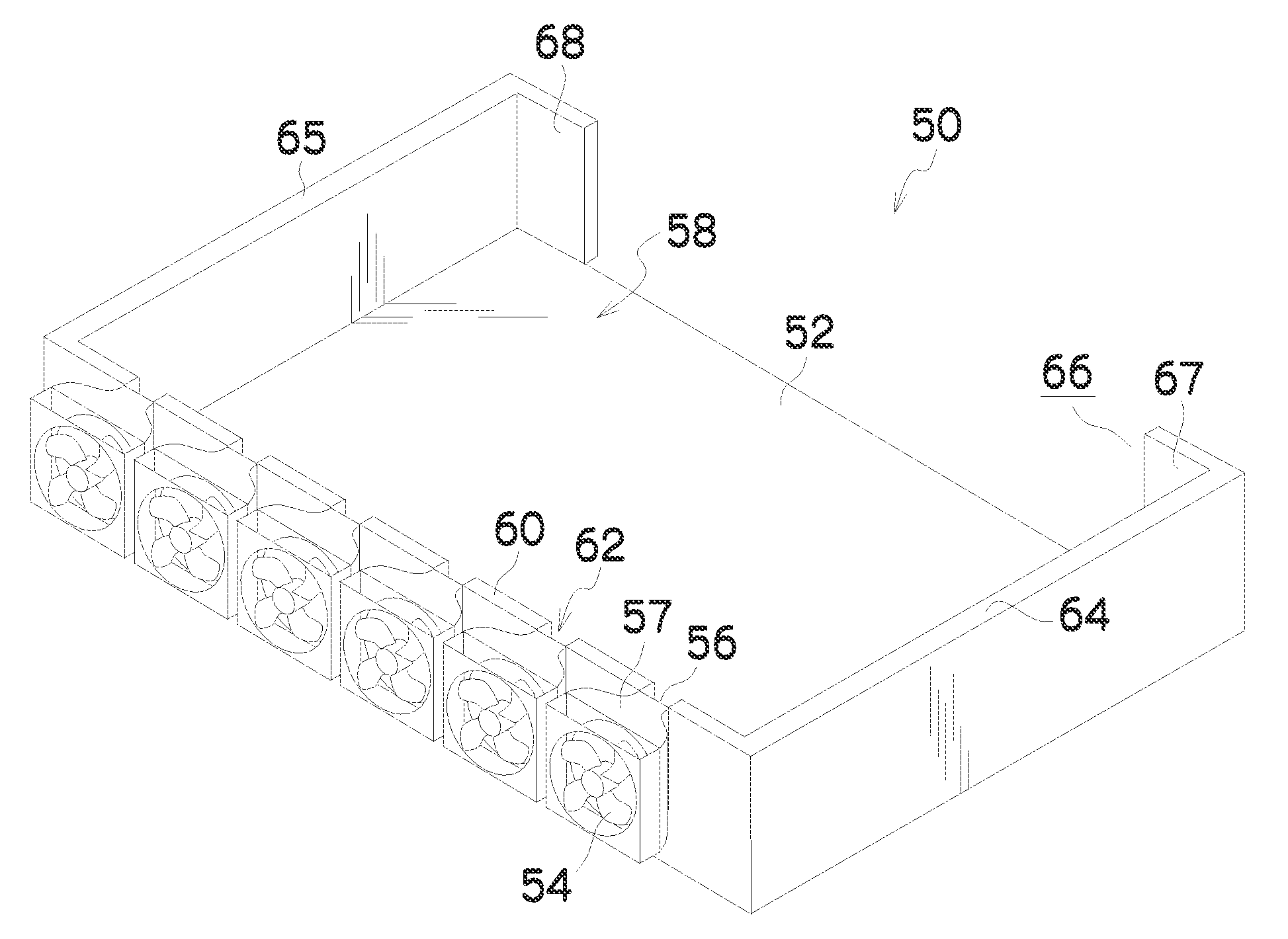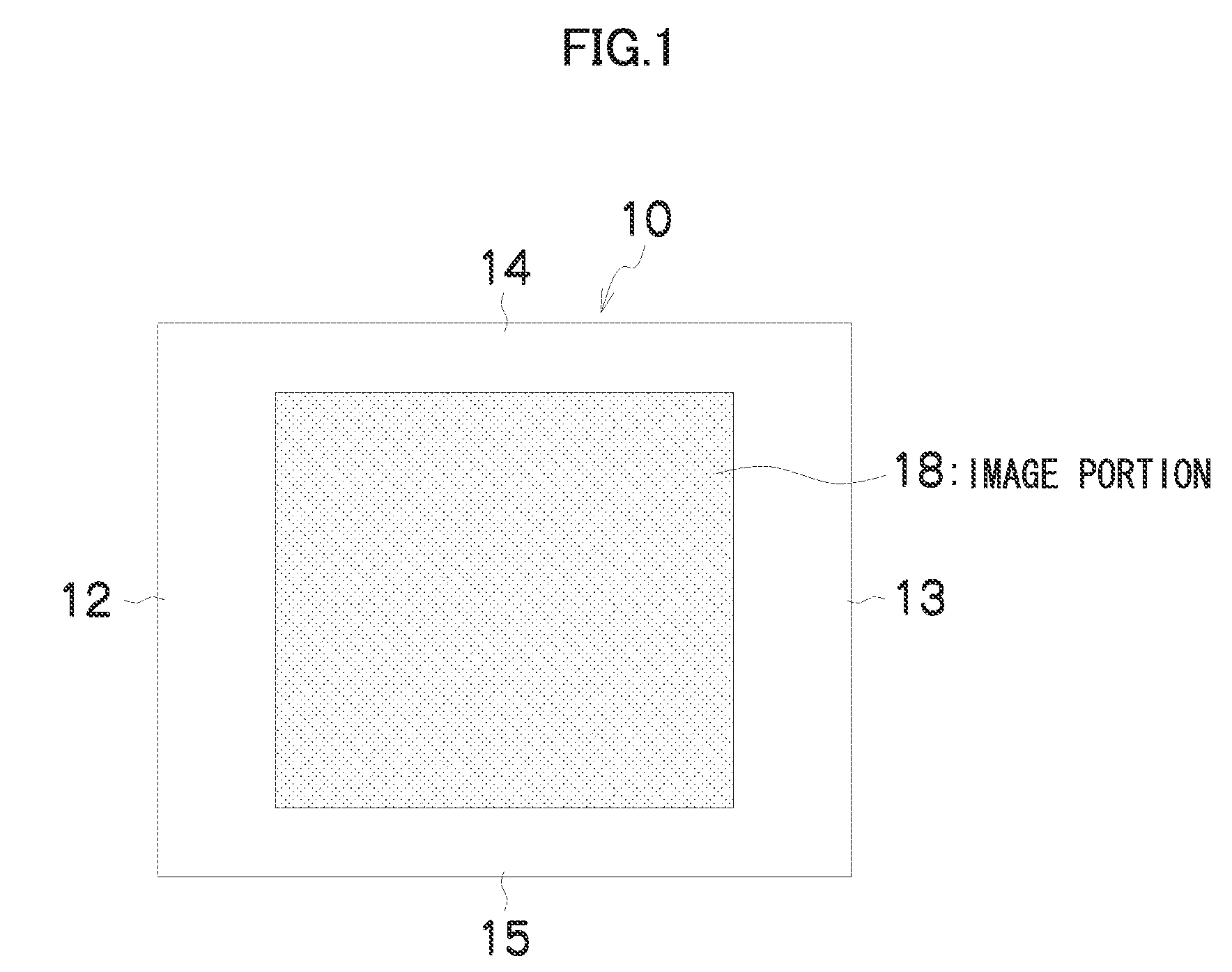Printed matter seasoning apparatus and method, and inkjet recording apparatus
a seasoning apparatus and inkjet technology, applied in the direction of pile separation, transportation and packaging, article separation, etc., can solve the problems of deviation in the size and position of images printed respectively on the front surface and the rear surface, significant expansion of paper, and mismatch between the register on the front and rear surface, so as to prevent expansion/contraction and deformation of paper, improve the productivity of printed matter, and shorten the time
- Summary
- Abstract
- Description
- Claims
- Application Information
AI Technical Summary
Benefits of technology
Problems solved by technology
Method used
Image
Examples
modified embodiment 1
[0116]FIGS. 11 and 12 are schematic drawings showing a seasoning apparatus according to another embodiment of the present invention. FIG. 11 is a plan diagram showing a schematic view of a state during air blowing, and FIG. 12 is a side view of same. In FIGS. 11 and 12, elements which are the same as or similar to the composition described with reference to FIGS. 5 to 9 are denoted with the same reference numerals, and description thereof is omitted here.
[0117]As shown in FIGS. 11 and 12, it is also possible to adopt a mode where an air flow is blown from each of two end sides of the paper 70 stacked on the table 52. In this case, the air passage ports 66 are formed in the side planes where the air blowing units 80 (blowers 54) are not arranged.
[0118]According to this mode, compared to the mode where the air blowing is performed in a single direction, it is possible to reduce the effects of the pressure loss due to the passage of air through the gaps between the paper sheets, and ef...
modified embodiment 2
[0120]FIG. 13 is a schematic drawing showing a seasoning apparatus according to yet another embodiment of the present invention. FIG. 13 is a side view diagram showing a schematic view of a state during air blowing. In FIG. 13, elements which are the same as or similar to the composition described with reference to FIGS. 5 to 9 are denoted with the same reference numerals, and description thereof is omitted here.
[0121]As shown in FIG. 13, it is possible to adopt a composition in which shelf plates 92 are arranged in the paper accommodating section on the table 52, and the sheets of paper 70 are stacked on a plurality of decks separately. FIG. 13 shows an example in which the paper accommodating section is divided into four decks by three shelf plates 92, and the number of shelf plates 92 can be suitably set to one or more, in accordance with the number of decks to be divided. By arranging n shelf plates 92 between the table 52 and the ceiling plate 76, a paper accommodating section ...
PUM
| Property | Measurement | Unit |
|---|---|---|
| static pressure | aaaaa | aaaaa |
| size | aaaaa | aaaaa |
| static pressure | aaaaa | aaaaa |
Abstract
Description
Claims
Application Information
 Login to View More
Login to View More - R&D
- Intellectual Property
- Life Sciences
- Materials
- Tech Scout
- Unparalleled Data Quality
- Higher Quality Content
- 60% Fewer Hallucinations
Browse by: Latest US Patents, China's latest patents, Technical Efficacy Thesaurus, Application Domain, Technology Topic, Popular Technical Reports.
© 2025 PatSnap. All rights reserved.Legal|Privacy policy|Modern Slavery Act Transparency Statement|Sitemap|About US| Contact US: help@patsnap.com



